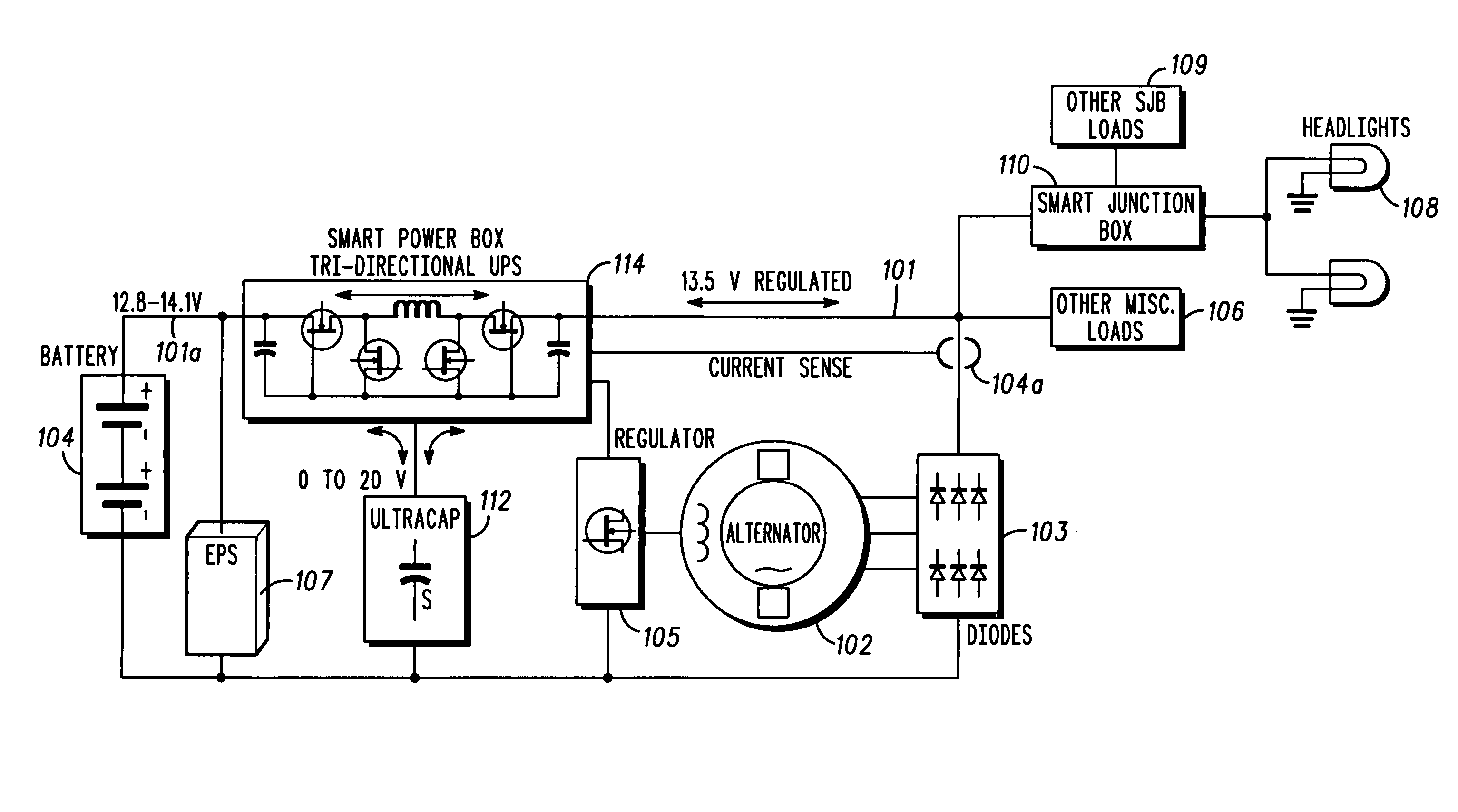Automotive electrical system
a technology for electrical systems and vehicles, applied in the direction of dc network load balancing, electric devices, transportation and packaging, etc., can solve the problems of unable to use large vehicles, such as light trucks, with conventional vehicle electric systems, and limited alternator current output capability,
- Summary
- Abstract
- Description
- Claims
- Application Information
AI Technical Summary
Problems solved by technology
Method used
Image
Examples
Embodiment Construction
[0018] What is described are electrical system topologies intended to mitigate the impact of large intermittent loads on a 12 volt vehicle power distribution system. In some embodiments, the intermittent load is disconnected from the remainder of the system and the voltage supplied to this load is allowed to fluctuate. In other embodiments, the voltage to critical loads (e.g., the headlights) is regulated independently of the voltage supplied to the remainder of the system. The different topologies described can be grouped into categories, each corresponding to a different solution technique.
[0019] One approach is to regulate the voltage to the critical loads. A solution in this mode is to provide a separate boost converter for critical loads, as illustrated in FIG. 1. A second approach is to isolate the intermittent load (e.g., EPS) that causes the drop in system voltage. These solutions typically involve multi-directional DC / DC converters and are illustrated in FIGS. 3-7. The thi...
PUM
 Login to View More
Login to View More Abstract
Description
Claims
Application Information
 Login to View More
Login to View More - R&D
- Intellectual Property
- Life Sciences
- Materials
- Tech Scout
- Unparalleled Data Quality
- Higher Quality Content
- 60% Fewer Hallucinations
Browse by: Latest US Patents, China's latest patents, Technical Efficacy Thesaurus, Application Domain, Technology Topic, Popular Technical Reports.
© 2025 PatSnap. All rights reserved.Legal|Privacy policy|Modern Slavery Act Transparency Statement|Sitemap|About US| Contact US: help@patsnap.com



